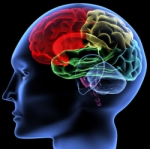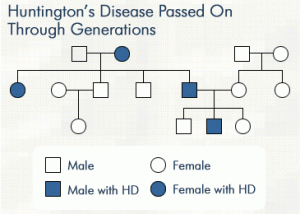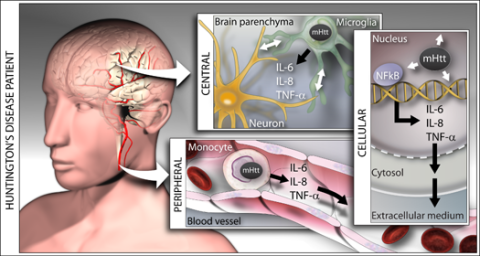Stem Cell Treatment of Huntington’s Disease
April 1, 2012 § Leave a comment
 Huntington’s disease is an heritable, debilitating, congenital neurological disorder in which nerve cells in certain parts of the brain degenerate. It is caused by a defect on chromosome 4. It deprives patients of both muscle coordination and cognitive ability. It involves a slow and painful death.
Huntington’s disease is an heritable, debilitating, congenital neurological disorder in which nerve cells in certain parts of the brain degenerate. It is caused by a defect on chromosome 4. It deprives patients of both muscle coordination and cognitive ability. It involves a slow and painful death.
Thus far, there is no effective treatment for this ailment. But if researchers can build upon the research published this week in the journal Cell Stem Cell.
on a special type of brain cell created from stem cells, they could help restore the muscle coordination that causes the spasms that are distinctive in the disease.
Su-Chan Zhang, neuroscientist at the University of Wisconsin-Madison, senior author of the study said excitedly, “This is really something unexpected!” In the study, locomotion was restored to mice with a Huntington’s-like condition.
Zhang specializes in building different types of brain cells from human embryonic or induced pluripotent stem cells. In this new study, the team concentrated on what are known as GABA neurons, cells that degrade, causing the disruption of a key neural circuit and loss of motor function in Huntington’s patients. Zhang explains that GABA neurons produce a critical neurotransmitter, a chemical that buttresses the communication system in the brain that synchronizes movement.
The team at the UW-Madison Waisman Center learned how to create large amounts of GABA neurons from human embryonic stem cells. They required them for testing in mice models of the disease. The goal was to see if the cells would safely integrate into the mice brains. The results revealed that the cells not only integrated but they also traveled directly to the target, successfully reestablishing the shattered communication network. This worked to restore motor function.
Zhang and others on the team found these results surprising because GABA neurons only reside in one portion of the brain, the basal ganglia, which takes part in a critical role in voluntary motor coordination. The GABA neurons usually act upon cells in the midbrain through the circuit propelled by the GABA neuron chemical neurotransmitter.
Zhang explains, “This circuitry is essential for motor coordination, and it is what is broken in Huntington patients. The GABA neurons exert their influence at a distance through this circuit. Their cell targets are far away.” Therefore, the effective reestablishment of the circuit by the transplanted cells was very surprising. Zhang said, “Many in the field feel that successful cell transplants would be impossible because it would require rebuilding the circuitry. But what we’ve shown is that the GABA neurons can remake the circuitry and produce the right neurotransmitter.”
 Findings from the new study are important because they imply that one day it may be possible to use stem cell therapy to treat Huntington’s disease. Also it implies that the adult brain may be more acquiescent than formerly supposed.
Findings from the new study are important because they imply that one day it may be possible to use stem cell therapy to treat Huntington’s disease. Also it implies that the adult brain may be more acquiescent than formerly supposed.
Zhang explains that the adult brain is considered stable by neuroscientists. This means it is not very responsive to therapies that seek to correct for things like broken circuitry at the heart of Huntington’s. Zhang says, “The brain is wired in such a precise way that if a neuron projects the wrong way, it could be chaotic.”
Zhang expresses that moving from the mice model to the adult patient will take time and effort, but the findings still prove groundbreaking for those with Huntington’s, a disease for which there has been heretofore no hope.
Works Cited
“Huntington’s Disease – Huntington Chorea.” (April 30, 2011). PubMed Health. A.D.A.M. Medical Encyclopedia. March 18, 2012. http://www.ncbi.nlm.nih.gov/pubmedhealth/ PMH0001775/.
“Stem Cells Hint at Potential Treatment of Huntington’s Disease”. (March 15, 2012). Neuroscience News. March 18, 2012. http://neurosciencenews.com/stem-cell-treatment-huntingtons-disease-gaba-neurons/.
